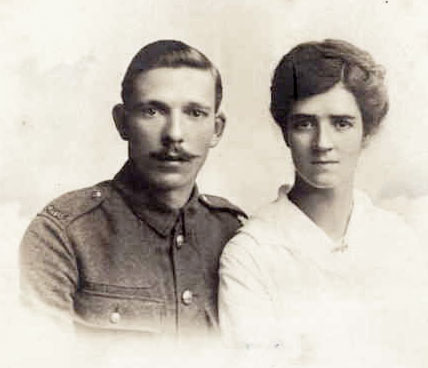Private Charles Watson

Charles Watson was born on 23 May 1888 at 74 Bristol Street, Belfast, the first of seven children of stonemason Andrew Watson and his wife Margaret (nee Taggart). By the time of the 1911 Census he was living with his parents and six siblings at Bristol Street and working as a butcher. Four years later, however, he was working as a motorman. On 12 January 1915 he married Jane McNeill in Belfast, the couple moving to 121 Manor Street.
Watson enlisted in the North Irish Horse between 10 and 19 April 1916 (No.2150). He embarked for France in 1916 or the first half of 1917, where he was posted to one of the squadrons of the 1st or 2nd North Irish Horse Regiments.
In September 1917 the 2nd NIH Regiment was dismounted and most of its men, together with some surplus to the needs of the 1st NIH Regiment, were transferred to the infantry. After training at the 36th (Ulster) Division Infantry Base Depot at Harfleur, the men were formally transferred to the Royal Irish Fusiliers on 20 September and soon after were posted to the 9th (Service) Battalion – re-named the 9th (North Irish Horse) Battalion – joining it in the field at Ruyaulcourt. Watson was issued regimental number 41281.
Watson was wounded while with the battalion on the Cambrai front in October or November 1917. He was, most likely, evacuated to the UK for treatment. Whether he saw further overseas service during the war is not known. In August 1918 he was transferred to the Labour Corps (No.614714).
Watson was discharged on 17 July 1919. After the war he returned to Belfast and found work as a tram conductor and later as a motorman. He died at his home, 121 Manor Street, on 28 January 1963.
Image sourced from Ancestry Public Member Trees, posted by Marion Taggart, with the caption "Believed to be Charles Watson ... This picture was from a bag of pictures previously owned by Edith Milliken (nee Taggart)" (Note: The shoulder title does not appear to be North Irish Horse or Royal Irish Fusiliers.)
